It’s time to move on from playing your electric or acoustic guitar, and it’s time to store it. Now, with the right storage methods like using guitar cases, you can store your guitar lying, or you can wall mount it, and with some caution, you can make sure that your electric or acoustic guitar stays safe and sound for years to come.
This article will guide you through the basics of how to store a guitar correctly, so you can keep it in top condition when you need to pick it up again.

No matter what level or amount of experience you’re at with guitars, whether it’s a lot or just a little, storing your electric or acoustic guitar properly is essential – not just for keeping your instrument safe but also to keep it in top condition so when the time comes to pick up again, you won’t be disappointed.

The tips provided in this article are simple but effective, they will help ensure your acoustic or electric guitar is well taken care of when in storage and make sure that there is no damage done throughout its prolonged period of hibernation. So read on and let’s get started!
Contents
Choosing the right guitar stand
So, how to store a guitar? When it comes to storing your guitar, the right stand for a guitar can mean the difference between a happy and healthy guitar, and one that’s suffering from wear and tear. Store your guitar correctly, especially expensive guitars.

When choosing a stand, look for one that’s sturdy enough to support your instrument properly, and make sure the padding is thick enough to protect the guitar’s body.
You should also avoid floor stands with metal parts that could scratch or chip your guitar.
Quality materials like wood, plastic, or leather usually provide better protection than metal parts.
Clean your guitar regularly with a soft cloth. Additionally, some stands come with straps that offer added security against accidental falls.
A sturdy stand may cost you a bit more at first, but it will be worth it in the long run if it helps keep your guitar secure in pristine condition for years to come!
Investing in a hard or soft guitar case to store a guitar
If you’re serious about protecting your guitar, your best bet is to invest in either a hard or soft guitar case. Hard cases are made for long-term storage and are sturdier than their soft case counterparts.

Softer cases provide more flexibility and sometimes even have small pockets and compartments inside.
Both types of cases provide great protection from the elements, allowing you to store your guitar in the same spot without worrying about too much damage being done.
You can even place your guitar inside a hardshell case and seal it in a large plastic bag. Place the guitar on a shelf to protect it from flooding. Take the guitar out regularly to inspect it, and play it, the guitar’s neck is the priority.

Regardless of which type of case you choose, make sure it fits snugly around the shape of your guitar stored and can hold it securely without being too tight.
Additionally, check for any rips or tears in the material, as these can weaken its ability to protect your instrument effectively.
The aesthetics are important too—a good-looking case with your guitar inside can add to the appeal of an already stylish guitar.
Pros and cons of using gig bags to store guitars
A gig bag can be a great option for storing and transporting your guitar. They come in a variety of styles and sizes, so it is easy to find one that fits your guitar.
On the plus side, the gig bag provides both cushioning and protection from the elements.
The downside is that the materials don’t provide as much padding or protection against knocks and bumps as hard guitar cases would.

They also generally won’t last as long, especially if they are constantly being loaded and unloaded from vehicles or subjected to rough treatment.
Make sure your gig bag has sturdy padding, reinforced zipper pulls, and secure straps to keep your guitar safe.
Zippers can break over time, so it is important to replace them regularly. Pay attention to areas where straps are attached to ensure they are fully secured.
How to store a guitar: utilizing a flight case
Using a flight case to store guitars is the best way to ensure they’re in perfect condition when you’re ready to play again.
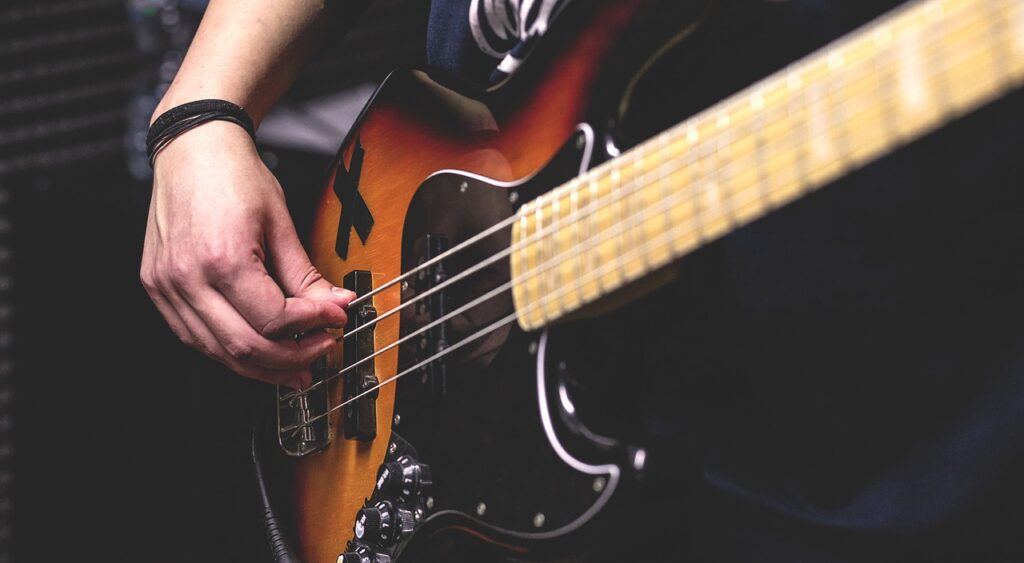
Flight guitar cases are specially designed cases that feature thick foam insulation, sturdy timber frames, and heavy-duty locks.
This combination gives your guitar unrivaled protection from the elements and potential damage that could be incurred in transit or storage.
For added security, you can also get flight cases that come with additional features such as shock absorbers, recess handles, and even wheels for easy transport.

Although they tend to be pricier than hard shell cases, their investment value is well worth it in the long run as they offer superior protection and longevity compared to other types to store a guitar.
Tips for long-term electric guitar storage
Storing an electric guitar properly is essential if you want to keep it in great shape and ready for use whenever you need it. Here are some tips for long-term electric guitar storage:
Keep it cool and dry
Store your guitar in a cool, dry place away from direct sun rays to avoid damaging its finish. If possible, use a climate-controlled environment to ensure the ideal temperature and humidity level.

Avoid storing your guitar in damp places such as near windows or bathrooms where humidity levels can fluctuate quickly.
Store it securely
You should always store your electric guitar in a hard case; soft guitar cases may not be enough protection against scratches and dings from accidental drops or falls.
Be sure the case is closed securely, as this will ensure that no dust or moisture enters the case and damages your instrument.
Invest in humidity control system
If you plan to store a guitar for more than a few months at a time, investing in a humidity control system like a dehumidifier is highly recommended.

This will help prevent any moisture buildup in the case and will also keep your strings from rusting due to excessive humidity.
Finally, you may also want to consider investing in additional accessories such as humidifiers, desiccants, or temperature control devices if necessary to ensure that the environment inside your case is reliably dry and stable while it’s being stored long-term.
Find a good space to store a guitar
Now that you have picked up a good acoustic guitar, the next step is to find a proper place for guitar storage. You want to make sure that where you store your acoustic guitar is comfortable and safe.

To ensure the longevity of your acoustic guitar, it should be stored in an area that offers consistent levels of humidity and temperature, away from direct sun rays and extreme temperatures.
Ideally, you should look for a storage space that prevents dust buildup on the instrument while ensuring proper circulation. Here are a few tips to help you find the right spot:
- Temperature: Look for an area with moderate temperatures (around 68-70 degrees Fahrenheit). Avoid storing the guitar in extremely hot or cold environments.
- Humidity: High levels of humidity can cause damage to your acoustic guitar strings and body. Look for an area with low humidity levels (32%-45%).
- Circulation: Good circulation will help prevent dust build-up on the instrument. Make sure there is enough space around the instrument to allow air to circulate properly and remove any stale air or moisture build-up.
- Sunlight: Direct sun rays can affect the color and finish of your instrument over time, so it’s best to store it away from windows or any other sources of direct light to ensure its longevity.
Consider humidity and temperature levels for your acoustic guitars properly
Acoustic guitars: When storing acoustic guitars, it is important to consider temperature and humidity levels. Too much humidity can cause corrosion on the metal parts of the guitar, while too little humidity can cause the wood to shrink or crack.

To ensure optimal performance, the temperature should be kept at a moderately cool temperature to store a guitar (68-72 °F).
Extreme temperatures can damage the guitar’s components, especially the guitar neck. If you can guarantee those two things are taken care of, then you have already done the hard part for the storage of acoustic guitars.
Check the string tension of your electric guitar
Checking the string tension of your electric guitar is essential to ensure it is not too loose or too tight when stored for long periods.

To ensure optimal string tension while storing guitars, use a digital tuner to check if the strings are in tune, use a neck relief adjustment to check the string action, re-tune again after setting up the neck relief adjustment, and make sure all other hardware components are well-maintained and properly adjusted when needed.
Understand how to adjust the truss rod of your electric guitar
Nobody likes a crooked neck on their electric guitar, so it’s important to understand how to adjust the truss rod of your instrument.
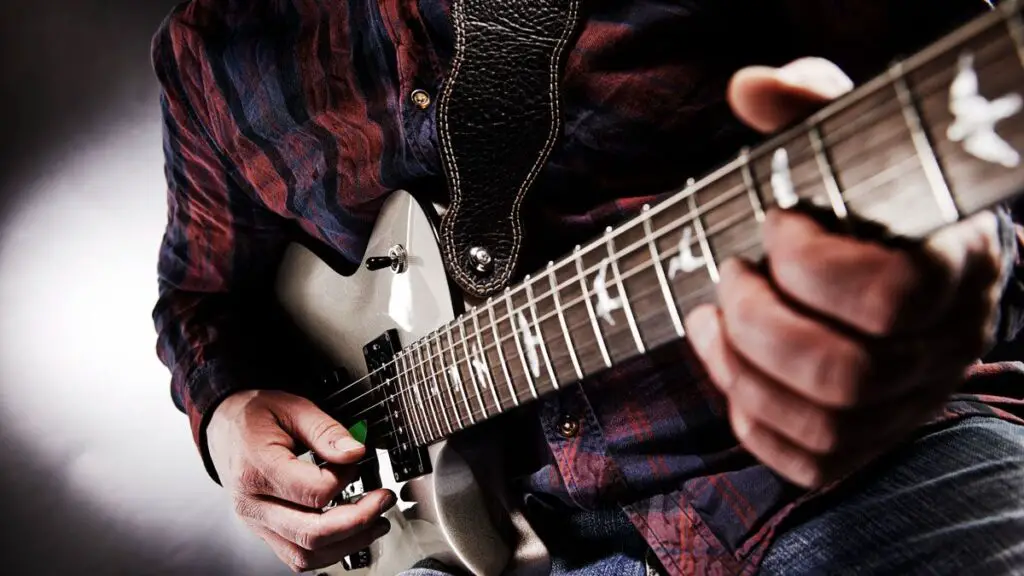
It is a metal bar inside the neck of the guitar which can be used to adjust the tension and shape of the neck. This important tool is what allows you to achieve the perfect action – or the distance between strings and fretboard – for your instrument.
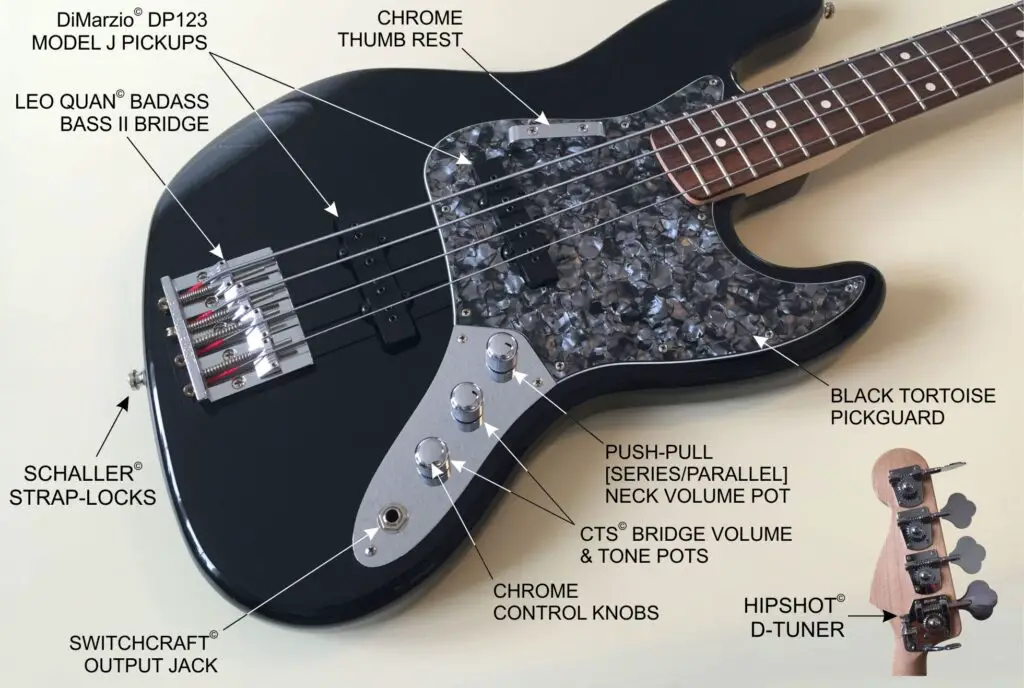
Here are some tips for adjusting a truss rod:
- Make sure your guitar is properly tuned before adjusting the truss rod.
- Slowly loosen or tighten the truss rod nut until you reach your desired action.
- If you feel resistance as you loosen or tighten, stop and check with a technician before continuing.
- Be sure to check your tuning after each adjustment and make small adjustments until you reach the desired action.
- When finished, re-tune your guitar before storing it away.
By spending a few moments making sure that your truss rod is properly adjusted, you’ll ensure that your guitar won’t suffer any damage during storage, and will be ready to play when you pick it up again!
Tips on storing multiple guitars
Do you have multiple guitars that need to be stored? If so, here are a few tips to help you out:
- Assign each guitar its specific storage spot. This way, it’ll be easier to keep track of them and make sure they won’t get lost or damaged.
- Label each guitar case with the make and model of the instrument, as well as its serial number, if available. This will help you easily identify each one in case you ever need to locate a specific instrument quickly.
- Store each guitar in its hard shell case or gig bag, as this will offer it the best protection from dust and other environmental factors like humidity and temperature change.
- Place all stored guitars far away from any heat source, air conditioning unit, or other electronic equipment that can give off a lot of heat.
- When storing multiple guitars, make sure there is enough space between them, so they don’t rub against each other and get scratched or dented when moving them around, especially a guitar neck.
- If possible, hang your guitars up on hooks or store them on shelves instead of placing them flat on the ground where moisture can accumulate and damage the wood over time (if no other type of protection is used).
Avoid storing your guitar in direct sunlight
Storing your guitar in direct sun rays can cause warping and fade to the instrument’s varnish and paint, so it is important to keep it out of direct sunlight if possible.
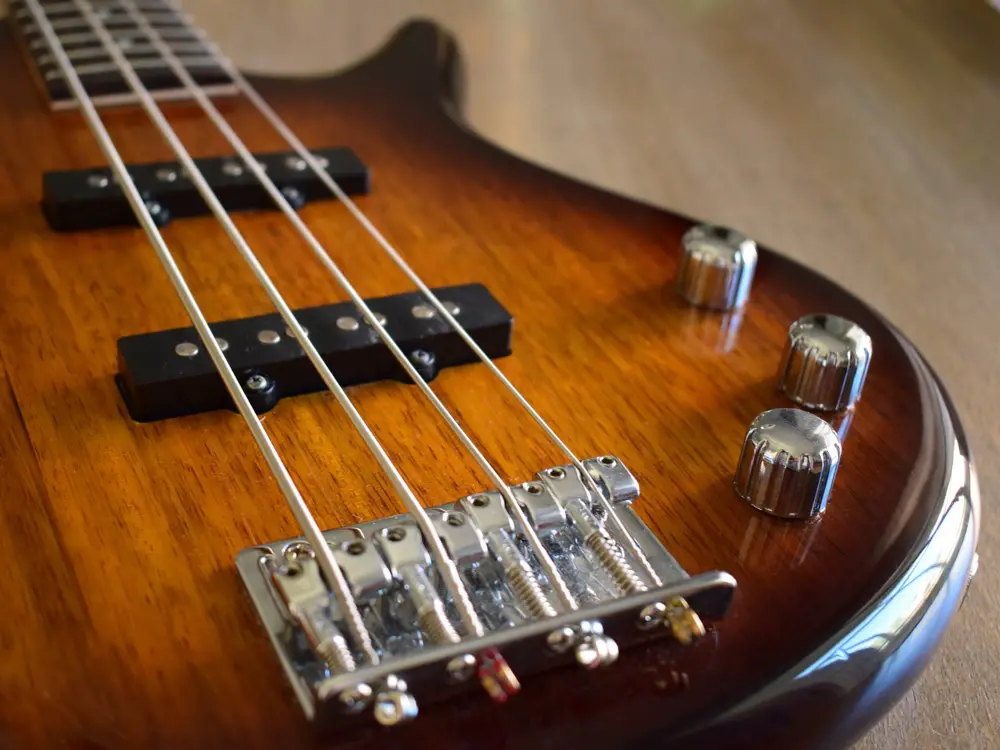
If you don’t have access to a temperature-regulated room, it is best to look for alternatives like shade, case, and blanket. When not in use, the best protection against extreme temperatures and UV rays is a hard shell case.
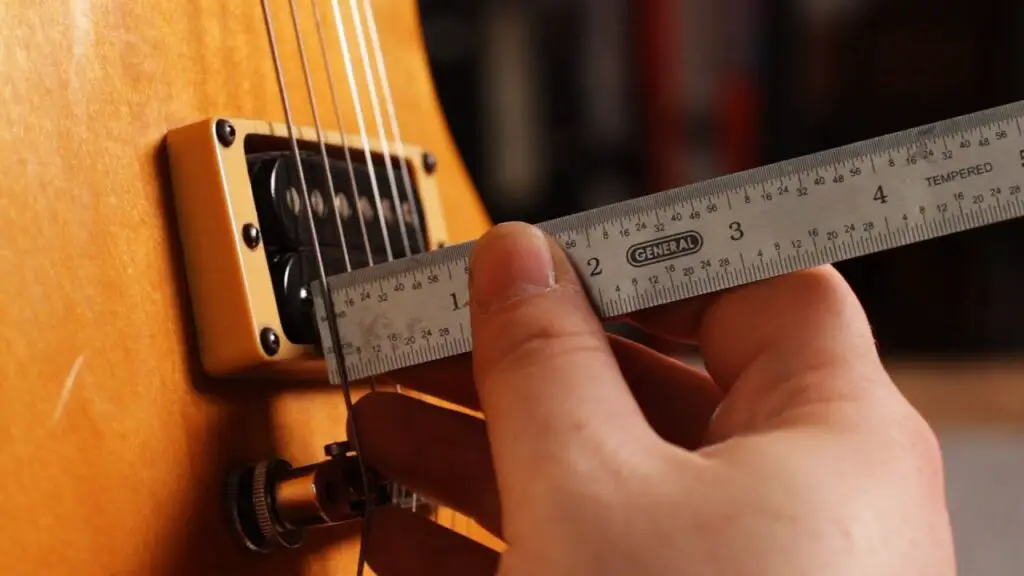
Placing a thin blanket over your guitar when not in use helps reduce the effects of long-term exposure to UV rays and humidity changes.
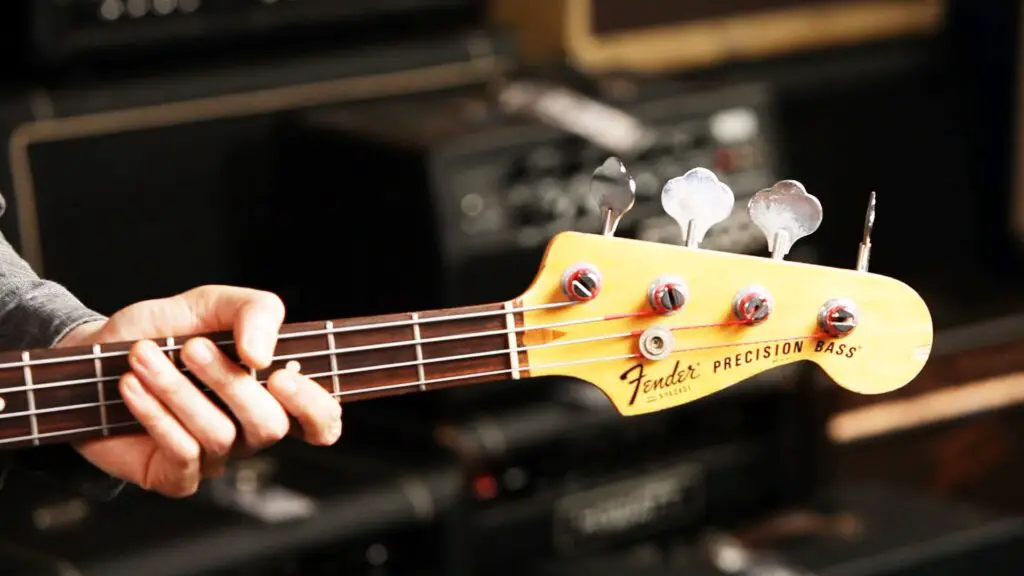
By properly storing your guitar indoors or outdoors with these tips, you can ensure that it will remain in top condition for years to come.
Which guitar case is right for you?
When it comes to storing a guitar, it is important to choose a quality case that is compatible with the shape and size of the guitar.
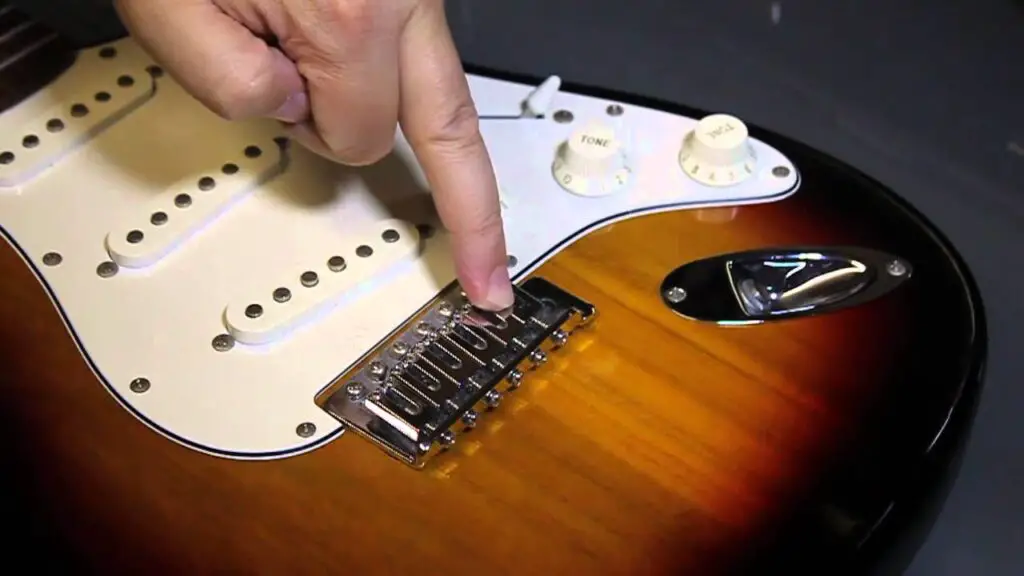
Different cases feature different levels of protection, so investing in a quality case is important.
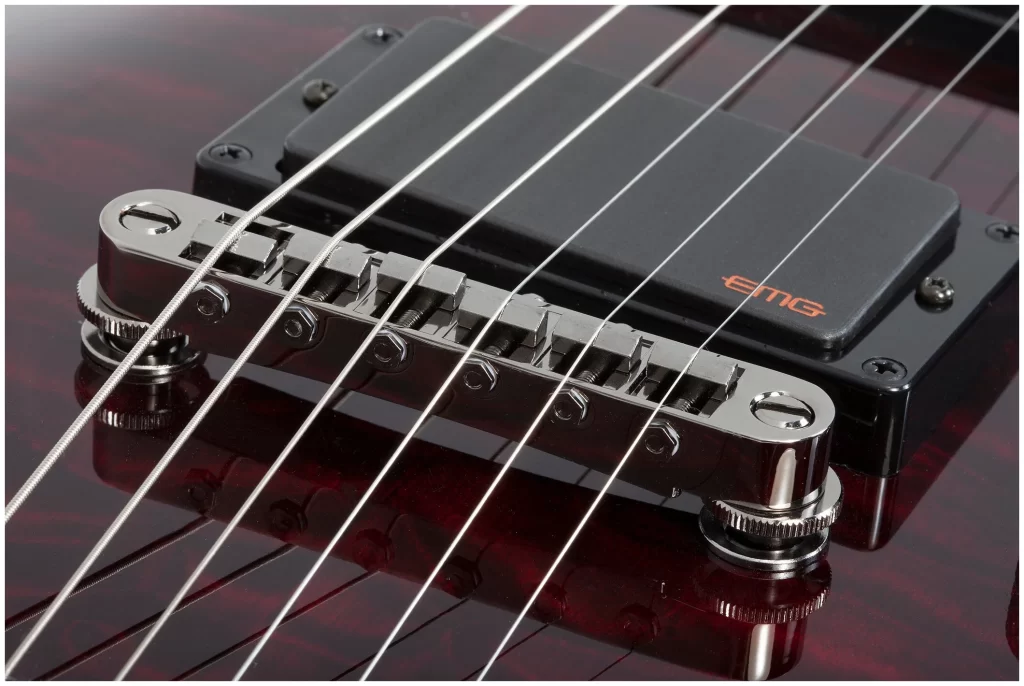
It is also important to consider features like thermal insulation or solid construction materials that ensure optimum safety for the guitar.
What kind of guitar stands are available?
No matter where you plan to store your guitar, a stand is a great way to keep it safe and sound.

There are two basic types of stands, wall-mounted and floor-mounted. Wall-mounted stands are great if you have limited space, and they provide a secure hold for your guitar when you’re not playing it.

Floor-mounted stands are perfect for larger areas, and they provide added stability that won’t let your guitar slip or move around.
If you’re looking to display your guitar in a room and want it to act as a piece of decor, there are all kinds of different types of stands available.

You can find stands made of wood, metal, and even plastic. Plus, there are plenty of special designs that feature all kinds of cool features like built-in pick holders or holders for headphones or music stands!
What is the best way to store a guitar in a guitar stand?
One of the best tools you can use to store your guitar is a guitar stand, and with a few simple instructions, you can quickly get your guitar properly secured in the stand.

Before you begin, make sure that the stand has been cleaned and is free of any dust or dirt.
Here’s how you store a guitar in a guitar stand:
- Secure your guitar to the neck and the rest of the stand.
- Make sure that the bridge of your guitar is properly placed on the bridge rest of the stand.
- Put a cloth between your guitar and stands to protect it from scratches or other damage
- Once everything is in place and secure, use a strap to attach the body of your guitar to the bottom of the stand for extra stability
- Use a clamp to adjust the neck rest so that there’s no pressure on it when storing
- Check if all strings are tight before taking it out of storage
- If possible, cover your guitar when not in use for extra protection against dust.
Storing your electric guitars correctly in a guitar stand when not in use will ensure that they look good and perform well for years to come – so make sure that you follow these steps!
How to use guitar racks for storage
Storing guitars in guitar racks is another great way to keep your stringed instrument safe and secure. A guitar rack can help you organize multiple instruments and keep them secured to the wall, preventing accidental damage or falls.

When selecting a rack, make sure it has plenty of room for adjustment and can accommodate a variety of sizes of electric guitars.
Also, make sure that the instruments are secured properly in the guitar rack while they are stored away. You don’t want them coming loose from their place! Here are some steps you should follow:
- Place your guitar into the appropriate notch on the rack for its size.
- Securely attach the back support bracket to the back side of your guitar with screws.
- Ensure that all four corners of your instrument are snug against the back support bracket to avoid any movement when handling or when placing it on the wall mountable rack.
- Finally, securely fasten your instrument onto the wall mountable rack with screws or bolts that come with it for stability purposes, if needed.
By following these simple steps, you’ll be able to store away your guitar safely and securely in a rack until you’re ready to grab it again and rock out!
Other options for storing a guitar
Aside from choosing a case for your guitar, there are other options that you can use for long-term storage. Depending on the size of your guitar and where you’re keeping it, you have some more traditional choices like:
- Wall hangers. If you plan to keep your guitar in the same room as a practice space, wall hangers are a great option.Not only do they take up very little space, but they also let you display your guitar in an esthetically pleasing way. Just make sure to buy one that is designed to hold electric guitars and not just acoustic guitars.
- Guitar stands. This is an ideal option if you’re storing multiple electric guitars and require something to keep them upright and off the floor.Although these tend to be a bit pricier than wall hangers, they provide more stability and support, which may be worth the extra cost. Plus, they look cool too!
- Instrument shelves. If you don’t have space for a stand or wall hanger, then an instrument shelf may be the right choice for you—it’s basically like a normal bookshelf but with adjustable shelves so that it can fit a variety of instruments.This could be great if you want to store other instruments besides just electric guitars!
Conclusion
Since you have learned ways how to store your guitar properly, we believe that you will make an informed decision, taking into account all the pros and cons of each storing method. And your guitar will always be in top condition. Hope our article was useful for you. Thanks for reading.
FAQs
Is it OK to leave electric guitar out of case?
There are a few reasons why leaving your guitar out of its case is a bad idea. For starters, it is vulnerable to weather damage. Dust, dirt, and even humidity can all damage your guitar’s finish and internals, and if it is not in a case, it is much more likely to be damaged.
Should I store my guitar upright or flat?
It makes no difference whether you store the guitar lying flat or standing up, especially if it is in a hard shell case, as long as nothing is on top of it. Storing several guitars in their cases, one on top of the other is never a good idea.
Is it OK to lay a guitar flat?
Laying your guitar flat is not a good way to store it because it invites accidents such as stepping or dropping items on your guitar. It is recommended that you keep your guitar on a stand or in a case.
Is it OK to store guitar out of case?
It is perfectly fine to leave a guitar on a stand instead of keeping it in a case when you are not playing it unless you are humidifying it with a case humidifier or have small children or pets running around who could knock it over.
